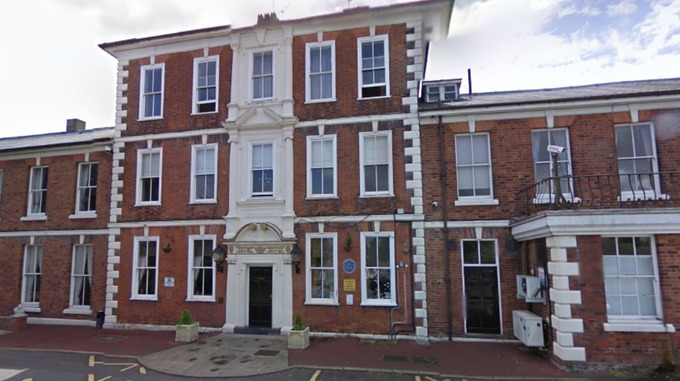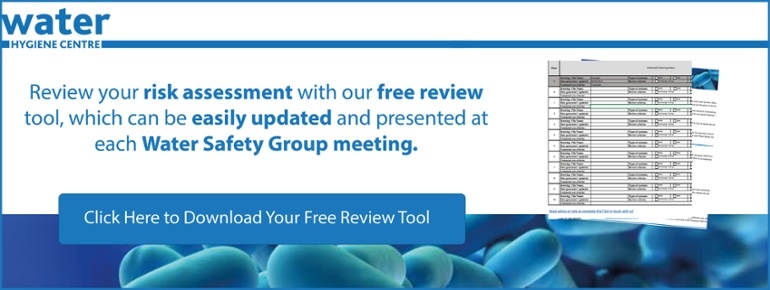
The Ramada Park Hall Hotel is a Grade II listed building Credit: Google Maps
In recent months there have been numerous published cases of Legionnaires’ disease associated with hotels:
- Hotel closed after legionella bacteria found in water
- Legionella found again at Ludlow's The Feathers Hotel
The question must be, why does Legionnaires’ disease occur in hotels and what should hoteliers be doing to ensure the health, safety and welfare of their guests who’ve checked in…?
As an independent consultant I travel all over the UK visiting various places to assist organisations with their ‘water issues’ and consequently I spend a lot of time in hotels. This includes small family-run hotels, larger hotels part of a small group and the large national chain brand hotels. I’ve had some experiences with the water in hotels ranging from cold water that was scalding hot, no hot water, no water flow at all and, in one instance, the substance that came out of the tap resembled brown jelly [otherwise known as ‘biofilm'. These occurrences are few and far between but do happen!
What is legionnaires’ disease and who does it affect?
The Health & Safety Executive [HSE] publication ACOP L8 Legionnaires' disease. The control of legionella bacteria in water systems details the following:
“Legionellosis is a collective term for diseases caused by legionella bacteria including the most serious Legionnaires’ disease, as well as the similar but less serious conditions of Pontiac fever and Lochgoilhead fever. Legionnaires’ disease is a potentially fatal form of pneumonia and everyone is susceptible to infection. The risk increases with age, but some people are at higher risk, eg people over 45, smokers and heavy drinkers, people suffering from chronic respiratory or kidney disease, diabetes, lung and heart disease or anyone with an impaired immune system”.
Legionella is a naturally occurring bacteria found in both natural and man-made water systems. Given favourable conditions, such as warm water and poorly maintained plumbing, the bacteria will grow and proliferate within various types of building water systems [eg. spa pools, cooling towers and hot and cold distribution systems]. When contaminated water is released from the system, such as through a tap or shower outlet, a fine spray or mist known as an aerosol is created that can contain legionella bacteria. Legionnaires’ disease is typically contracted when victims inhale the aerosol that has been released into the air. The initial symptoms of the disease are flu-like and can take 2-10 days to appear.
Legionella in hotels - Everything you need to know
There are certain conditions that increase the risk from legionella bacteria; either because of bacteria proliferating within the water system or due to increased likelihood of human exposure:
- A warm water temperature (20-45°C) in all or some parts of the system will be suitable for growth;
- Where water droplets can be produced and dispersed allowing human exposure;
- Systems where water is stored and/or re-circulated;
- Where there are deposits that can support bacterial growth, such as rust, sludge, scale, organic matter and biofilms.
The HSE has reported that inadequate management, lack of Legionella training, and poor communication are all factors that have contributed to outbreaks of Legionnaires’ disease.
What is required to manage the risk of Legionnaires’ disease?
The HSE ACOP L8 details explicitly what an organisation needs to do to comply with their legal and statutory obligations under the Health & Safety at Work etc Act 1974, Control of Substances Hazardous to Health Regulations and the Management of Health & Safety at Work Regulations.
Where to start… the organisation that owns the hotel/s should identify who is responsible for health& safety, typically this person is the duty holder [the owner / chief executive for the organisation]. They need to start by reading the HSE guide called ‘Legionnaires Disease – A Brief Guide for Duty Holders’.
Based on the size of the organisation the Duty Holder will need to ensure adequate processes are in place as detailed in the HSE ACOP L8 document. With a single hotel the owner will typically be the Duty Holder and may also be the Responsible Person. With small or large hotel chains the relevant hotel manager is typically the Responsible Person for each hotel.
The Responsible Person is responsible for the property. They are there to ensure Health & Safety issues are being proactively managed. The Responsible Person needs to be suitably competent to manage the risk of Legionnaires’ disease; this means they need to understand the risks involved and what the guidance requires. It is not as simple as pointing at the hotel manager and calling them the ‘Responsible Person’ if they’ve no knowledge or experience.
Invariably the Responsible Person needs to have read the HSE employers guide and then the HSE ACOP L8. This reading is a start, although akin to learning to drive where you should read the Highway Code and then take lessons on the road. The same is true with management of health & safety risks, those who are responsible will need to attend suitable and sufficient Legionella training for them to understand what the HSE require in order to comply with the ACOP L8.
Although by no means a substitute for reading the ACOP L8, the legal duties of the Duty Holder can be summarised as follows:
- Appoint a Responsible Person who is competent with sufficient authority and knowledge of the installation to help take the measures needed to comply with the law; [further details found in ACOP L8 paragraphs 48–51].
- Risk assessment - identify and assess sources of risk. The ACOP L8 details what is required from a risk assessment [further details found in ACOP L8 paragraphs 28–47]. It is most likely you’ll need to commission an independent consultancy to undertake the Legionella risk assessment . The Legionella Control Association lists those members [>300] who can undertake risk assessments. A cautionary note - those organisations offering an all-inclusive service may not always be impartial . A fair few to choose from, although there are only fifteen companies that can deliver UKAS accredited risk assessment.
- Prepare a written scheme of control for managing [preventing / controlling] the risk [further details can be found in ACOP L8 paragraphs 58–64]. Essentially the written scheme of control can be a suite of documents i.e. management policy / operational control procedures / site log book records. The policy details the management arrangements for the organisation. The operational procedures details how the risk systems identified from the risk assessment will be operated, monitored and maintained. The written scheme of control must be bespoke to your organisation!
- Implementation of the written scheme of control – ensuring the management policy and the associated management tasks are undertaken. With the operational procedures ensuring the defined maintenance and regular monitoring processes are undertaken, to prove control measures remain effective [further details can be found in ACOP L8 paragraphs 65–69]. To confirm that microbiological control is being achieved sampling for legionella can be undertaken to check that a system is under control [further details can be found in ACOP L8 paragraph 6].
- Keep records! In Health & Safety law records / evidence are essential to prove proactive management is being achieved. Records can exist in paper or electronic format, which is acceptable, although records need to be accessible and understood. Where non-compliant issues have occurred then there must be evidence recorded that this has been investigated and mitigated [further details can be found in ACOP L8 paragraphs 70–74].
To summarise, there is sufficient guidance and information available to those persons who have responsibility to manage properties to understand what the risks are and what they need to be doing for the risk to be managed as far as is reasonably practicable. The organisation which owns the hotel/s needs to have an appointed person who is suitably trained and has and understanding of the risks. This person can ensure adequate measures are in place to reduce the risk of Legionnaires’ disease through a defined scheme of maintenance and monitoring. Where the appointed person feels they need additional support they can reach out to external organisations [although they need to satisfy themselves the organisations are competent to deliver – see LCA]. Outbreaks of Legionnaires’ disease are preventable given the plethora of guidance and support available to hotel/s.
Feel free to reach out if you have any questions about this blog or if you would like to consult with one of our experts for further advice on water hygiene.
Editors Note: The information provided in this blog is correct at date of original publication - September 2018.
© Water Hygiene Centre 2019







